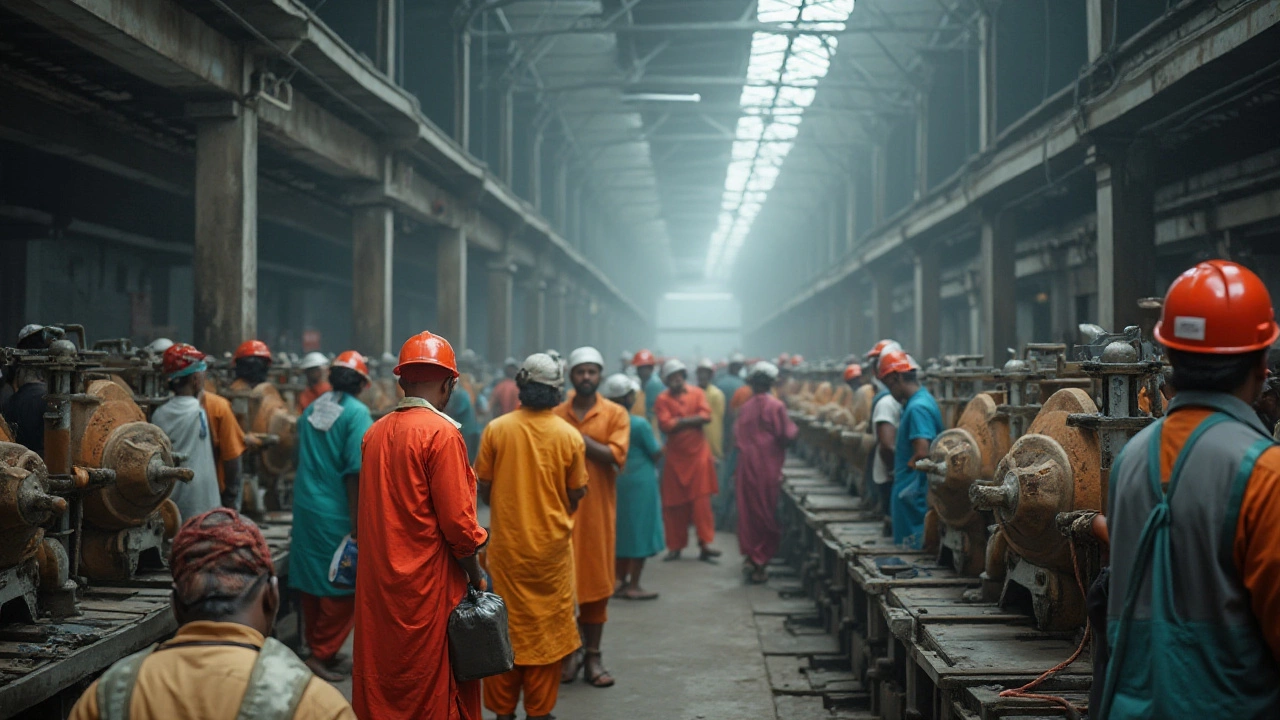Economic Growth: What’s Powering India’s Rise?
India’s economy is buzzing, and a big part of that buzz comes from what’s being built on the factory floor. From pharma labs churning out life‑saving drugs to steel mills humming in the heart of the Rust Belt, every sector adds a brick to the growth wall. If you’re curious why India’s GDP keeps ticking up, the answer starts with the factories, farms, and tech hubs that feed the nation.
Manufacturing’s Role in GDP
Manufacturing accounts for roughly 17 % of India’s GDP, and that slice is getting fatter each year. The pharma sector, for example, not only supplies the world’s generic medicines but also creates high‑value jobs and export revenue. A recent look at the Indian pharmaceutical landscape highlighted how cost advantages, massive production capacity, and a skilled workforce are pushing India to the top of the global drug supply chain.
Steel is another heavyweight. Cities like Pittsburgh in the U.S. have earned the nickname “Steel City,” but India’s own steel hubs are making a comparable impact. When local firms invest in modern blast furnaces and adopt greener technologies, they boost both domestic construction and export markets.
Furniture may sound niche, but brands like IKEA are betting big on India because the country’s rising middle class wants stylish, affordable homes. That demand fuels a supply chain stretching from sawmills in Gujarat to assembly lines in Tamil Nadu, creating a ripple effect that lifts ancillary businesses like logistics and raw‑material processing.
Emerging Sectors Driving the Next Wave
Beyond the traditional heavy industries, newer fields are adding fresh momentum. The electronics sector, dominated globally by China, is seeing Indian firms carving out niches in components and IoT devices. While China still leads, India’s push for “Make in India” policies means more chips, more jobs, and more export dollars.
Clean energy and air‑control solutions—our own specialty at Blue D Air Control—are also gaining traction. As the government tightens emission standards (remember the BS4 to BS6 shift?), factories are upgrading to greener equipment, creating a market for advanced control systems and boosting overall productivity.
Lastly, the textile and fabric industry proves that low‑cost, high‑volume production still matters. Starting a textile factory in India now involves navigating land costs, machinery investments, and regulatory hurdles, but the payoff can be significant given the global appetite for affordable fashion.
So, what does all this mean for the future? Expect a steady uptick in export‑driven growth, especially from sectors that blend traditional manufacturing with high tech—think pharma‑grade APIs, smart steel, and eco‑friendly furniture. Policy support, skilled labor, and infrastructure upgrades will keep the momentum going.
In short, India’s economic growth is a mosaic of old‑school factories and new‑age tech hubs. Keep an eye on the sectors that are expanding faster than the rest, because they’ll likely shape the country’s GDP story over the next decade.

Why Local Manufacturing is a Game Changer for Economies
Local manufacturing plays a critical role in boosting economies by creating jobs, reducing dependency on imports, and fostering innovation. Government schemes around the world have been devised to support local industries, making them the backbone of economic rejuvenation. With strategic investments and favorable policies, countries can leverage local manufacturing to strengthen economic stability and promote sustainability. Highlighting the importance of these initiatives, we explore the manifold benefits that local manufacturing brings to the table.
